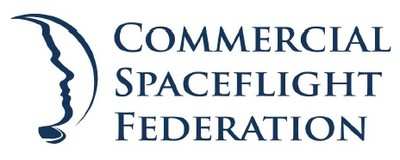Wed, Jul 01, 2009
White Paper On Low Earth Orbit Policy Delivered To White
House
Enabling the development of commercial crew and cargo
transportation to the International Space Station is the central
recommendation of a policy paper submitted by members of the
Commercial Spaceflight Federation tothe Review of U.S. Human Space
Flight Plans Committee, also known as the Augustine Committee.

In less than 18 months, when the space
shuttle is planned for retirement, the United States will become
solely dependent on Russia to send our astronauts to the Space
Station,¨ said Bretton Alexander, President of the Commercial
Spaceflight Federation. "By leveraging the private sector, America
can maximize our utilization of the Space Station and ensure that
NASA has more resources available for robust exploration of the
Moon and beyond.¨
Titled "Commercial Spaceflight in Low Earth Orbit is the Key to
Affordable and Sustainable Exploration Beyond,¨ the policy
paper makes the following major points:
 The key to full utilization of the
Space Station and sustainable exploration beyond low Earth orbit
(LEO) is to turn LEO over to the private sector, thereby allowing
NASA to focus its resources and expertise on exploration of the
Moon and beyond. By making a series of careful, targeted
investments, NASA can affordably and quickly enable the development
of commercial spaceflight capabilities for both people and cargo to
the International Space Station.
The key to full utilization of the
Space Station and sustainable exploration beyond low Earth orbit
(LEO) is to turn LEO over to the private sector, thereby allowing
NASA to focus its resources and expertise on exploration of the
Moon and beyond. By making a series of careful, targeted
investments, NASA can affordably and quickly enable the development
of commercial spaceflight capabilities for both people and cargo to
the International Space Station.
To do so, NASA should create a Commercial Crew Program based on
NASA's existing Commercial Orbital Transportation Services (COTS)
program for cargo to the Station. To maximize benefits to NASA and
the taxpayer, NASA should fund multiple fixed price,
milestone-based Space Act Agreements for development of commercial
crew capabilities, leveraging capital from the private sector.
Regardless of the exploration architecture chosen, government
and commercial spaceflight are not a zero-sum game. They are
complementary, not competitive.
The white paper was delivered to the Augustine Committee on
behalf of the member companies of the Commercial Spaceflight
Federation.
More News
Witness Reported The Airplane Was Flying Low And Was In A Left Bank When It Struck The Power Line Analysis: The pilot was on final approach to land when the airplane collided with >[...]
How To Get A Story On Aero-TV News/Feature Programming How do I submit a story idea or lead to Aero-TV? If you would like to submit a story idea or lead, please contact Jim Campbel>[...]
From 2012 (YouTube Edition): A Segment Of The Sport Aviation World That Truly Lives "Low And Slow" Pity the life of ANN's Chief videographer, Nathan Cremisino... shoot the most exc>[...]
Aero Linx: International Business Aviation Council (IBAC) IBAC promotes the growth of business aviation, benefiting all sectors of its industry and in all regions of the world. As >[...]
Execute Missed Approach Instructions issued to a pilot making an instrument approach which means continue inbound to the missed approach point and execute the missed approach proce>[...]
 NTSB Final Report: Cozy Cub
NTSB Final Report: Cozy Cub ANN FAQ: Contributing To Aero-TV
ANN FAQ: Contributing To Aero-TV Classic Aero-TV: Seated On The Edge Of Forever -- A PPC's Bird's Eye View
Classic Aero-TV: Seated On The Edge Of Forever -- A PPC's Bird's Eye View ANN's Daily Aero-Linx (04.29.25)
ANN's Daily Aero-Linx (04.29.25) ANN's Daily Aero-Term (04.29.25): Execute Missed Approach
ANN's Daily Aero-Term (04.29.25): Execute Missed Approach




